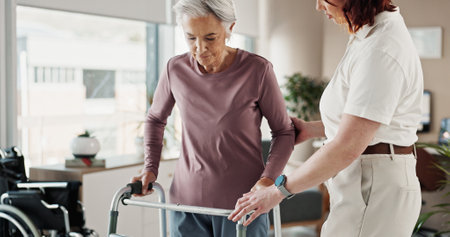Understanding Joint Replacement Surgery
What Is Joint Replacement?
Joint replacement surgery is a medical procedure where a damaged joint is removed and replaced with an artificial one, often made from metal, plastic, or ceramic. The most common joints replaced are the hip, knee, and shoulder. This surgery can help older adults regain mobility, reduce pain, and improve their overall quality of life.
Common Types of Joint Replacements
| Joint | Description | Who Might Need It? |
|---|---|---|
| Hip Replacement | Replaces the ball-and-socket joint in the hip with artificial parts. | Older adults with severe arthritis or hip fractures. |
| Knee Replacement | Replaces the damaged surfaces of the knee joint to relieve pain and restore function. | Those with chronic knee pain due to osteoarthritis or injury. |
| Shoulder Replacement | Replaces the ball at the top of the arm bone and sometimes the socket in the shoulder blade. | People with shoulder arthritis or rotator cuff injuries that havent improved with other treatments. |
Why Do Older Adults Need Joint Replacement?
The main reason for joint replacement surgery in older adults is to relieve pain caused by joint damage. Osteoarthritis is the most common culprit, but rheumatoid arthritis, joint injuries, and bone fractures can also lead to the need for a new joint. Many seniors choose this surgery when pain makes it hard to do daily activities like walking, climbing stairs, or even sleeping comfortably.
Other Reasons May Include:
- Reduced mobility that affects independence
- Lack of improvement with physical therapy or medications
- Increased stiffness and swelling in the affected joint
- Difficulty performing favorite hobbies or social activities
What to Expect Before Surgery
If you or a loved one is considering joint replacement surgery, there are a few steps youll go through before the operation:
- Consultation: You’ll meet with an orthopedic surgeon who will review your medical history, symptoms, and may order X-rays or other imaging tests.
- Pre-Surgery Testing: Common tests include blood work, EKGs, and sometimes chest X-rays to make sure you’re healthy enough for surgery.
- Preparing Your Home: Your healthcare team will provide tips on making your home safer for recovery—think about removing tripping hazards and arranging help if needed after discharge.
- Medication Review: Some medicines may need to be stopped or adjusted before surgery. Always follow your doctors instructions closely.
- Education Sessions: Many hospitals offer classes about what to expect during your hospital stay and recovery process. These sessions help you feel more confident and prepared for what’s ahead.
This overview can help you understand why joint replacement might be recommended for older adults and what steps are involved before heading into surgery. In upcoming sections, we’ll look more closely at recovery strategies and tips for each type of joint replacement.
2. Preparing for Surgery: Setting Up for Success
Getting Your Home Ready
Before your joint replacement surgery, making your home safe and comfortable is a big step toward an easier recovery. Here are some practical tips to help you get started:
| Area | What to Do |
|---|---|
| Living Room & Bedroom | Move furniture to create clear pathways. Place commonly used items within easy reach. Consider using a sturdy chair with arms and a firm seat. |
| Bathroom | Add non-slip mats in the shower and near the sink. Install grab bars by the toilet and in the shower. Use a raised toilet seat if needed. |
| Stairs | If possible, set up a temporary sleeping area on the first floor to avoid stairs during early recovery. |
| Lighting | Make sure all areas are well-lit, especially hallways and bathrooms, to prevent falls. |
| Assistive Devices | Have items like walkers, canes, or reachers ready as recommended by your healthcare team. |
Arranging Support After Surgery
You’ll need some help after your procedure, especially in the first few weeks. Planning ahead ensures you have the support you need:
- Family & Friends: Ask someone you trust to stay with you or check in daily after surgery.
- Transportation: Arrange rides to and from medical appointments since driving may not be possible right away.
- Meal Prep: Prepare meals ahead of time or organize meal deliveries for easy access to healthy food.
- Pet Care: Plan for help walking dogs or caring for pets if needed.
- Home Health Services: Speak with your healthcare provider about visiting nurses or physical therapists who can assist at home.
Optimizing Physical and Mental Health Before Surgery
Your health before surgery plays a major role in how quickly you recover. Here’s how to boost your body and mind in preparation:
| Step | Description |
|---|---|
| Physical Therapy “Prehab” | Your doctor may recommend exercises to strengthen muscles around your joint before surgery. |
| Healthy Diet | A balanced diet rich in protein, fruits, and vegetables supports healing. Stay hydrated! |
| No Smoking or Alcohol Excess | If you smoke, try to quit, and limit alcohol intake; both can slow down recovery. |
| Mental Preparation | Acknowledge any worries or fears. Talk with your doctor about what to expect, and consider relaxation techniques like deep breathing or meditation. |
| Medication Review | Share your current medication list with your surgeon so adjustments can be made if necessary before surgery day. |
| Pain Management Plan | Discuss pain control options ahead of time so you know what to expect post-surgery. |
Quick Checklist: Getting Ready for Joint Replacement Surgery
- Create clear pathways at home
- Add safety features like grab bars
- Arrange help from family or friends
- Prep meals ahead of time
- Tidy up loose rugs or cords
- Talk with your doctor about health concerns and medications
- Mental health matters—don’t hesitate to seek support if needed
This preparation helps ensure that when it’s time for your hip, knee, or shoulder replacement, you’re set up for a smoother recovery journey.
![]()
3. The Day of Surgery and Hospital Stay
Walkthrough of the Surgery Process
On the day of your joint replacement surgery—whether it’s your hip, knee, or shoulder—you’ll arrive at the hospital early in the morning. After checking in, you’ll meet with your surgical team, including your surgeon and anesthesiologist. They will review your medical history and answer any last-minute questions. You will then change into a hospital gown and have an IV started for medications.
Typical Steps on Surgery Day
| Step | Description |
|---|---|
| Check-In | Arrive at the hospital, complete paperwork, and confirm procedure details. |
| Pre-Op Prep | Meet staff, change clothes, start IV, and discuss anesthesia options. |
| Surgery | The operation typically lasts 1-2 hours depending on the joint being replaced. |
| Recovery Room | You will be monitored closely as you wake up from anesthesia. |
| Transfer to Hospital Room | Once stable, you’ll be moved to a room where your recovery begins. |
Immediate Post-Op Care
After surgery, you’ll spend some time in the recovery room under close supervision. Nurses will monitor your vital signs and make sure you are comfortable as you wake up from anesthesia. You may notice a bandage over your incision and possibly a drain to collect excess fluids. The medical team will also begin preventive care to reduce risks like blood clots and infection—this can include compression stockings, blood thinners, or gentle exercises.
Pain Management Strategies
Pain management is a top priority after joint replacement surgery. Your care team will work with you to keep discomfort under control so you can start moving sooner and heal faster. Pain relief options might include:
| Pain Relief Method | How It Helps |
|---|---|
| Medications (oral or IV) | Relieves pain and inflammation; may include opioids, acetaminophen, or NSAIDs. |
| Nerve Blocks or Local Anesthetics | Numbs the surgical area for several hours after surgery. |
| Ice Packs & Elevation | Reduces swelling and eases soreness around the new joint. |
| Physical Therapy Exercises | Keeps the joint moving safely and can help manage pain naturally. |
Communicating with Your Healthcare Team
Your healthcare team is there to support you every step of the way. Don’t hesitate to speak up about any concerns—whether it’s pain level, nausea, or confusion about instructions. It’s important to let your nurses know if you’re feeling too much pain or if something doesn’t seem right. You’ll also be given information about what to expect during your stay and how soon you can start physical therapy. Make sure to ask questions like:
- When can I start eating or drinking?
- How soon will I begin physical therapy?
- What signs of complications should I watch for?
- Who do I contact if I need help after leaving the hospital?
This open communication helps ensure that your needs are met and sets the stage for a smoother recovery process during your hospital stay.
4. Rehabilitation and Physical Therapy
Key Recovery Milestones After Joint Replacement
After joint replacement surgery—whether it’s your hip, knee, or shoulder—rehabilitation and physical therapy are essential steps to help you get back on your feet and regain your independence. The recovery process includes several important milestones that most older adults can expect along the way. Here is a general timeline for what you might experience:
| Timeframe | Milestone |
|---|---|
| Day 1-3 Post Surgery | Standing up with assistance, starting gentle range-of-motion exercises, beginning to walk short distances (with a walker or crutches) |
| Week 1-2 | Transitioning from walker to cane (if safe), performing daily stretching and strengthening routines at home, increasing walking distance |
| Week 3-6 | Improved flexibility and strength, reduced pain and swelling, walking longer distances, starting more challenging exercises with your therapist |
| Month 2-3+ | Resuming most normal daily activities, driving (if cleared by your doctor), continuing outpatient therapy as needed for full recovery |
Essential Exercises for Hip, Knee, and Shoulder Recovery
Your physical therapist will tailor an exercise plan based on your specific surgery and needs. Here are some common types of exercises you might encounter:
| Joint Type | Sample Exercises |
|---|---|
| Hip Replacement | Ankle pumps, heel slides, hip abductions (moving leg out to the side), standing marches, mini-squats |
| Knee Replacement | Quad sets (tightening thigh muscles), straight leg raises, knee bends (seated or lying down), step-ups, hamstring stretches |
| Shoulder Replacement | Pendulum swings, assisted arm raises (using a stick or towel), gentle stretching, scapular squeezes (pinching shoulder blades together) |
The Role of Outpatient Physical Therapy in Regaining Independence
Outpatient physical therapy plays a big part in helping older adults reach their recovery goals after joint replacement. After you go home from the hospital or rehab center, you’ll often visit a local clinic two to three times per week. Therapists use specialized equipment and targeted exercises to improve your strength, balance, and range of motion.
What Happens During Outpatient Sessions?
- Your therapist assesses your progress and adjusts your exercise plan as needed.
- You’ll practice walking safely with or without assistive devices.
- You’ll learn techniques to make everyday tasks easier—like getting in and out of a car or reaching overhead.
- Your therapist will coach you on how to prevent falls and protect your new joint.
- Together, you’ll set realistic goals for returning to hobbies, social activities, or work.
If transportation is a concern, many clinics offer transportation services for seniors or can recommend community resources that help you keep up with appointments. Staying consistent with therapy is key—most people notice big improvements in confidence and mobility within the first few months when they follow their program closely.
5. Life After Joint Replacement: Long-term Recovery and Living Well
Returning to Daily Activities
After joint replacement surgery, getting back to your daily routines is an important part of your recovery. Most older adults can expect to return to activities like walking, shopping, light housework, and even driving within a few weeks or months. Here are some common timelines for resuming daily tasks:
| Activity | Typical Timeline After Surgery |
|---|---|
| Walking with Support | 1-2 days |
| Climbing Stairs | 3-7 days |
| Driving | 4-6 weeks (with doctor’s approval) |
| Light Housework | 4-8 weeks |
| Shopping & Errands | 4-8 weeks |
| Returning to Work (Desk Job) | 6-12 weeks |
Managing Expectations: What’s Normal?
Recovery after hip, knee, or shoulder replacement is a gradual process, and everyone heals at their own pace. It’s normal to experience swelling, mild pain, or stiffness for several months. While you may feel much better in a few weeks, full recovery can take up to a year.
Tips for Managing Expectations:
- Pace Yourself: Don’t rush your progress—listen to your body and follow your physical therapist’s guidance.
- Stay Active: Gentle movement helps reduce stiffness and improves healing.
- Celebreate Small Wins: Every step forward matters—whether it’s walking further or bending your new joint more easily.
- Ask Questions: Stay in touch with your healthcare team if you have concerns about pain, swelling, or mobility.
Preventing Complications
Main Risks After Joint Replacement:
- Blood Clots: These can be dangerous but are preventable by taking prescribed medications and moving regularly.
- Infection: Keep your incision clean and dry, and report any redness or fever to your doctor.
- Joint Dislocation (especially hip): Follow specific movement precautions as advised by your medical team.
- Losing Mobility: Stick with your physical therapy exercises to keep joints flexible and strong.
| Complication | Main Prevention Tips |
|---|---|
| Blood Clots | Ted hose, medication, walking daily |
| Infection | Keep incision clean, wash hands often, alert doctor about symptoms |
| Dislocation (Hip) | Avoid crossing legs or twisting; use assistive devices if needed |
Sustaining a Healthy Lifestyle in the American Context
Minding Your Diet and Weight Management:
- Nutrient-Rich Foods: Choose lean meats, fresh vegetables, whole grains, and low-fat dairy—typical choices in many American kitchens.
- Avoid Processed Foods: Limit fast food and sugary snacks which can lead to weight gain and inflammation.
- Stay Hydrated: Drink water throughout the day instead of soda or sugary drinks.
- Aim for a Healthy Weight: Extra pounds put stress on your new joint—ask your doctor for advice if you need help losing weight.
The Importance of Regular Activity:
- Create an Exercise Routine: Walking in your neighborhood or at the local mall is safe and social for most older adults in America.
- Avoid High-Impact Sports: Steer clear of running or jumping activities that could damage your new joint.
- Add Low-Impact Exercises: Swimming at community pools or joining senior fitness classes keeps you active without stressing your joint.
- Pace Your Progress: Gradually increase activity levels based on comfort and your therapists advice.
Your Support System Matters!
Your friends, family, neighbors, church groups, or local senior centers can offer support. Don’t hesitate to ask for help when you need it—most Americans value community involvement and helping each other out. Remember that living well after joint replacement is about staying active, making healthy choices, managing expectations, and connecting with others along the way.


